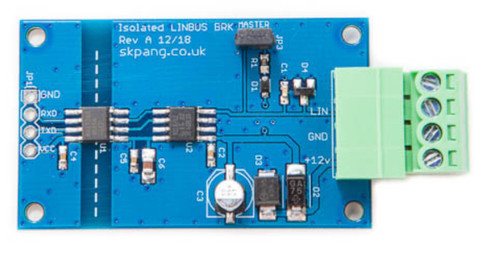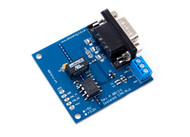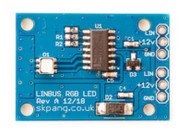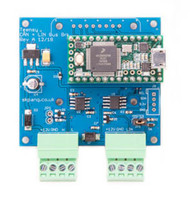- Home
- Breakout Boards
- Isolated LIN Bus Breakout Board
Product Description
Free Shipping Within the United States!
This is an isolated LIN Bus breakout board using the TJA1028 and MAX12931 ICs.
Features
- LIN 2.0/2.1/2.2 compliant
- SAE J2602 compliant
- Internal LIN slave termination resistor
- Master or Slave configuration (Select master by closing JP3)
- Robust ESD performance; 8 kV according to IEC61000-4-2 for pins LIN and VBAT
- LIN pin short-circuit proof to battery and ground
- K-line compatible
- Galvanic Isolation of Digital Signals
- Withstands 3kVRMS for 60s
- Continuously Withstands 445VRMS (VIOWM)
- Withstands ±10kV Surge Between GNDA and GNDB with 1.2/50μs Waveform
- High CMTI (50kV/μs, typ)
Documents
- Isolated LIN Bus Breakout Board - Schematics (PDF)...
- TJA1028 LIN transceiver with integrated voltage regulator - Data Sheet (PDF)...
More Resources
LIN (Local Interconnect Network) is a serial network protocol used for communication between components in vehicles. The need for a cheap serial network arose as the technologies and the facilities implemented in the car grew, while the CAN bus was too expensive to implement for every component in the car. European car manufacturers started using different serial communication topologies, which led to compatibility problems.
In the late 1990s, the LIN Consortium was founded by five automakers (BMW, Volkswagen Group, Audi Group, Volvo Cars, Mercedes-Benz), with the technologies supplied (networking and hardware expertise) from Volcano Automotive Group and Motorola. The first fully implemented version of the new LIN specification (LIN version 1.3) was published in November 2002. In September 2003, version 2.0 was introduced to expand capabilities and make provisions for additional diagnostics features. LIN may be used also over the vehicle's battery power-line with a special DC-LIN transceiver. (Source: Wikipedia.org)
Today's Technician: Automotive Electricity and Electronics, Classroom and Shop Manual Pack
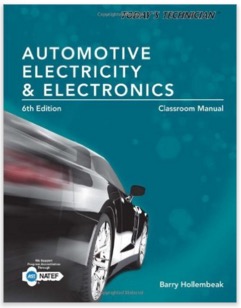 Ideal for aspiring and active automotive professionals, TODAY'S TECHNICIAN: AUTOMOTIVE ELECTRICITY & ELECTRONICS, Sixth Edition, equips readers to confidently understand, diagnose, and repair electrical and electronic systems in today's automobiles. Using a unique two-volume approach to optimize learning in both the classroom and the auto shop, the first volume (Classroom Manual) details the theory and application of electricity, electronics, and circuitry in modern automobiles, while the second (Shop Manual) covers real-world symptoms, diagnostics, and repair information.
Ideal for aspiring and active automotive professionals, TODAY'S TECHNICIAN: AUTOMOTIVE ELECTRICITY & ELECTRONICS, Sixth Edition, equips readers to confidently understand, diagnose, and repair electrical and electronic systems in today's automobiles. Using a unique two-volume approach to optimize learning in both the classroom and the auto shop, the first volume (Classroom Manual) details the theory and application of electricity, electronics, and circuitry in modern automobiles, while the second (Shop Manual) covers real-world symptoms, diagnostics, and repair information.
Known for its comprehensive coverage, accurate and up-to-date technical information, and hundreds of detailed illustrations and vibrant photographs, the text is an ideal resource to prepare for success as an automotive technician or pursue ASE certification. Now updated with extensive information on new and emerging technology and techniques--including audio and infotainment systems, LED and adaptive lighting, hybrid and electric vehicles, and accessory systems--the Sixth Edition also aligns with the NATEF 2012 accreditation model, including job sheets correlated to specific AST and MAST tasks.
 Loading... Please wait...
Loading... Please wait...

